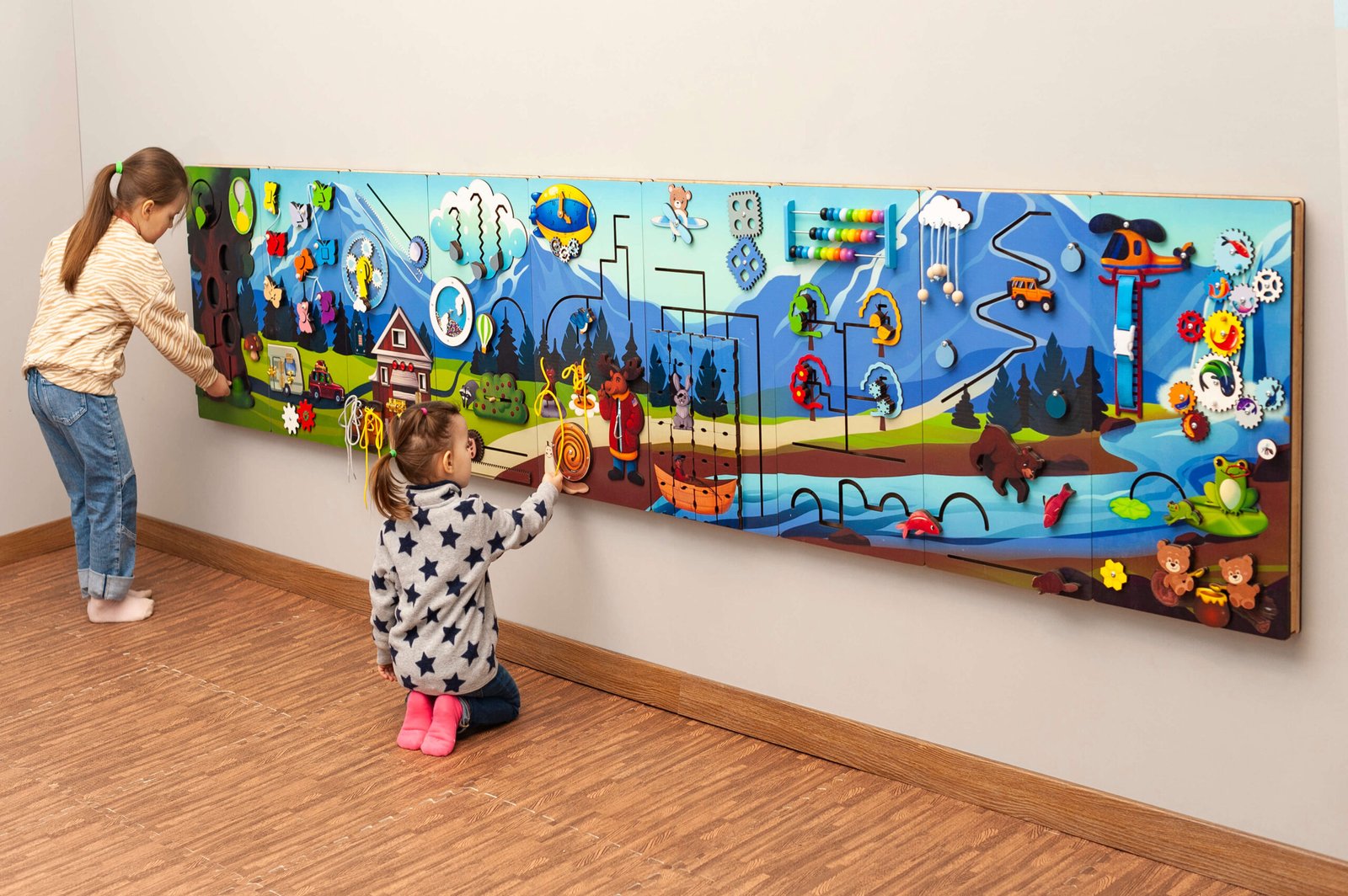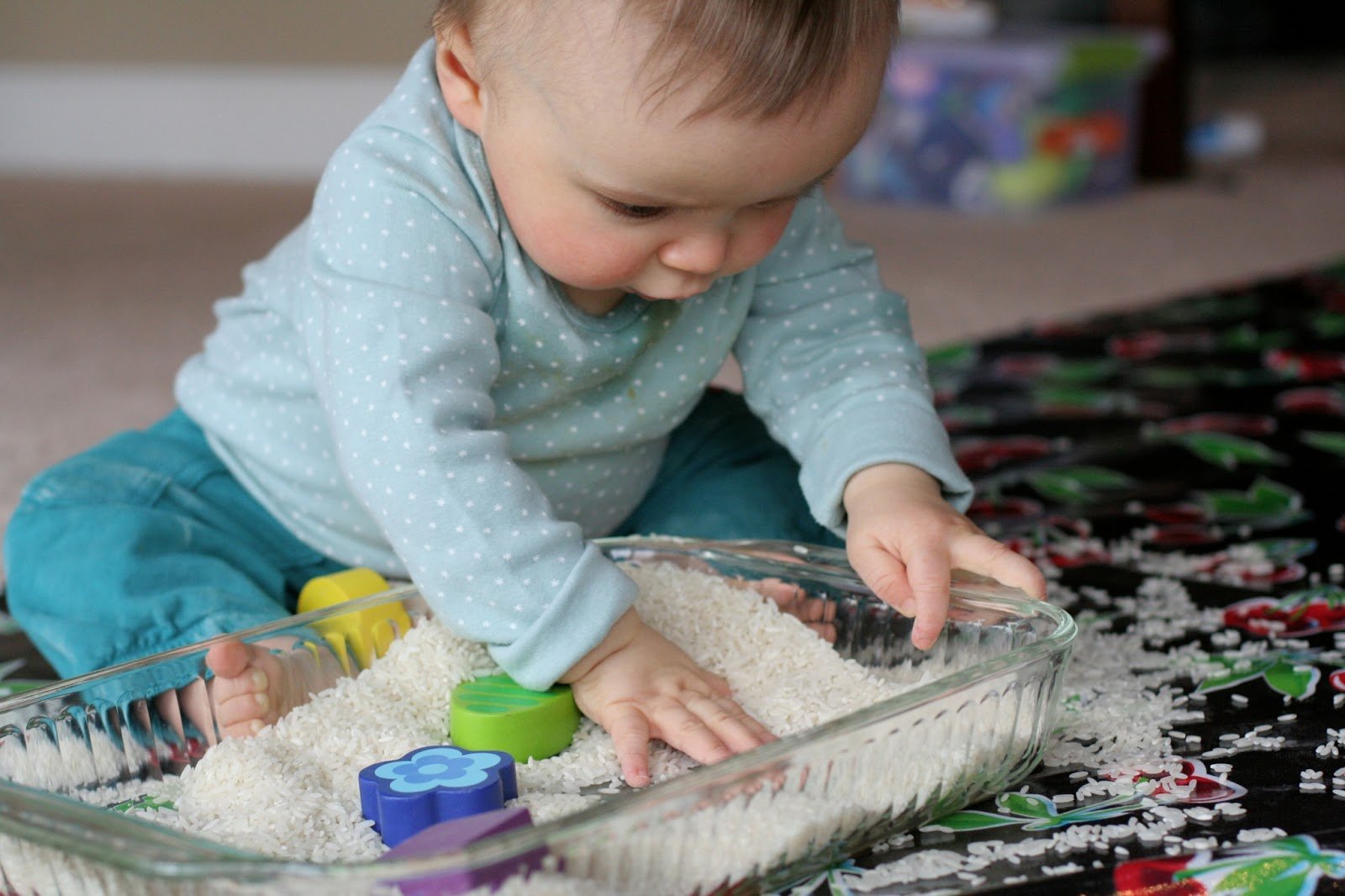Sensory play is an essential aspect of a toddler’s development, engaging their senses of touch, taste, sight, sound, and smell to promote cognitive, emotional, and physical growth. You don’t have to set aside extra time for sensory play; by incorporating it into your toddler’s daily routines, you can provide continuous learning opportunities throughout the day. Here’s how to seamlessly integrate sensory activities into everyday moments.
1. Meal Time: A Sensory Feast for Toddlers
Meal times are a great opportunity to introduce sensory experiences that involve sight, touch, smell, and taste. Let your toddler engage in their food while developing important skills like fine motor coordination and independence.
- Textural Exploration: Offer a variety of foods with different textures. Let your toddler explore soft, squishy foods like mashed potatoes, smooth yogurt, or ripe fruit, and firm foods like crackers or cut vegetables. Encourage them to feel the textures with their hands before tasting.
- Smell and Taste Games: Introduce new foods and ask your toddler to smell them before tasting. You can make it fun by playing games like, “What does it smell like?” or “Guess the flavor.”
- Colorful Plates: Use colorful vegetables, fruits, and grains to make the meal visually stimulating. Toddlers can engage in visual sensory play by identifying different colors and shapes on their plate.
- Water Play at Mealtime: Allow your toddler to play with small cups of water, pouring, scooping, and transferring liquid from one container to another. This builds hand-eye coordination and introduces a tactile experience during meals.
2. Bath Time: Sensory Play in Water
Bath time is naturally a sensory experience that engages your toddler in water play. Water is soothing and can be used for various types of sensory exploration.
- Water Pouring and Splashing: Give your toddler different-sized containers or cups to pour water in and out of during their bath. Let them feel the weight of the water as it flows and practice their pouring skills.
- Bubble Fun: Bath bubbles are a great way to stimulate the sense of touch and sight. Allow your toddler to pop the bubbles or feel the foam as it swirls around them. You can also add a little color to the bubbles with bath-safe food coloring for a fun visual experience.
- Soapy Play: Use soft washcloths or sponges for scrubbing, encouraging your toddler to feel the texture of the cloth and the softness of the soap as they “clean” their toys or themselves.

3. Playtime: Adding Sensory Activities to Toys and Games
Playtime is a prime opportunity for sensory exploration. Incorporating sensory play into your toddler’s toys and activities can enhance their learning and development.
- Sensory Bins: Fill a shallow bin with materials like rice, dried pasta, or water beads. Add small toys, measuring cups, or scoops for your toddler to explore. Let them bury their hands or objects in the sensory material to feel the textures and sounds.
- DIY Sensory Bottles: Create sensory bottles filled with items like glitter, beads, or small toys. As your toddler shakes the bottle, they will experience the sounds, colors, and movement, providing a calm and visually engaging activity.
- Play Dough Fun: Let your toddler squish, roll, and mold play dough into different shapes. Play dough helps build fine motor skills and provides a tactile experience that encourages creativity and sensory exploration.
- Music and Rhythm: Include music as part of playtime, whether through instruments like tambourines or maracas or playing soothing songs. Toddlers can tap along to the rhythm, helping them engage their sense of hearing.
4. Outdoor Play: Sensory Exploration in Nature
Outdoor activities are rich in sensory opportunities and can help toddlers connect with nature while stimulating multiple senses.
- Nature Walks: Take your toddler on nature walks, allowing them to touch tree bark, smell flowers, and listen to birds or wind rustling leaves. Encourage them to pick up leaves, twigs, or rocks to explore their textures.
- Sandbox Play: Set up a sandbox for your toddler where they can dig, scoop, and feel the texture of sand. Add small plastic animals, trucks, or cups for extra fun. This allows your toddler to practice their fine motor skills while feeling different textures.
- Water Play Outdoors: On warm days, set up a small water table or a splash pad in the yard. Let your toddler splash, pour, and feel the water, providing a sensory-rich activity to cool down in the summer.
- Gardening: Encourage your toddler to dig in the dirt, plant seeds, or water the plants. Sensory exploration in the garden teaches them about nature while they engage with the textures of soil, leaves, and flowers.
5. Chores and Routine Tasks: Sensory Learning in Daily Responsibilities
You can integrate sensory play into your toddler’s daily tasks and chores, turning everyday activities into learning experiences.
- Laundry Play: Let your toddler help with laundry. Have them feel the softness of clean towels or socks, or help transfer clothes from the washing machine to the dryer. This activity engages their tactile senses and introduces them to the concept of textures.
- Cleaning Time: Toddlers can help with dusting or wiping down tables using soft cloths or sponges. Encourage them to feel the softness of the cloth and practice their hand-eye coordination while wiping.
- Cooking with Toddlers: Involve your toddler in simple meal prep by letting them mix, stir, or feel ingredients. You can let them feel flour, knead dough, or taste ingredients as you cook, turning meal prep into an engaging sensory activity.
6. Storytime: Sensory Books and Interactive Learning
Reading to your toddler is not only a great bonding activity but also a fantastic opportunity to engage their senses in new ways.
- Interactive Books: Choose books with different textures, such as fabric, rubber, or flaps to open. Toddlers can feel and interact with the pages, which enhances both tactile and visual stimulation.
- Sound Books: Books that include buttons to press for sounds provide auditory sensory experiences. Whether it’s animal sounds or music, your toddler can listen and react to the sounds in the book.
- Storytelling with Movement: Incorporate simple actions or motions while reading stories, such as clapping your hands, tapping feet, or making animal movements. This adds an extra layer of sensory engagement to the story.
7. Sleep Time: Creating a Calming Sensory Routine
Bedtime can also become a sensory experience that helps your toddler unwind and prepare for a restful night’s sleep.
- Soothing Touch: Incorporate soft textures like blankets or stuffed animals to provide tactile comfort as part of your toddler’s bedtime routine.
- Gentle Music: Play calming lullabies or white noise to create a peaceful atmosphere and engage your toddler’s sense of hearing.
- Aromatherapy: Consider using calming scents such as lavender essential oil (in a safe diffuser) to provide a soothing sensory experience for your toddler before bed.
Conclusion
By integrating sensory play into your toddler’s daily routine, you not only support their sensory development but also encourage creativity, motor skills, and emotional regulation. From meal times to outdoor play, and even simple chores, there are endless opportunities to introduce sensory experiences throughout the day. With just a little creativity and mindfulness, you can make everyday routines both enriching and fun for your toddler.









